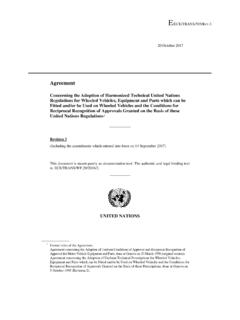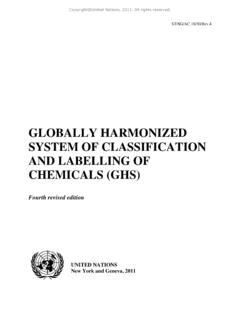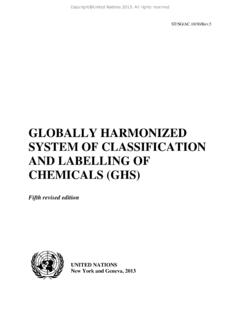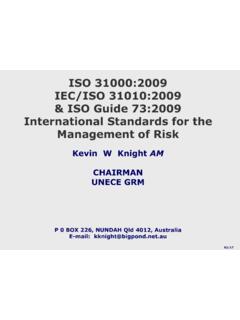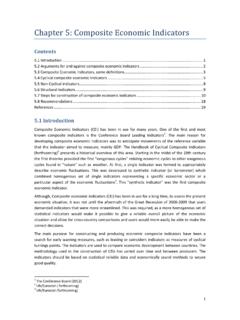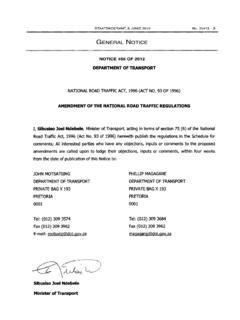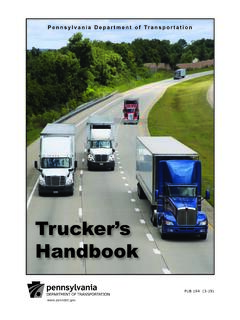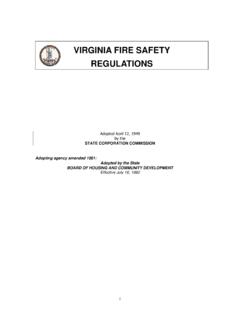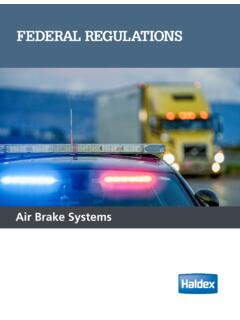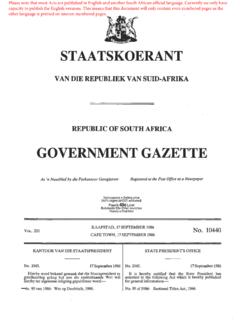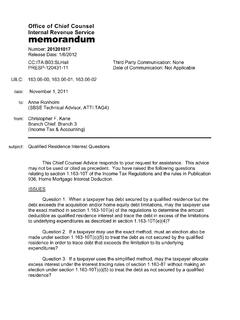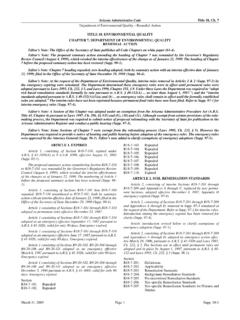Transcription of Chapter 12. International trade, standards and regulations ...
1 1 Chapter 12. International trade, standards and regulations Learning objective: to show why the World Trade Organization (WTO) devotes significant attention to good standardization and regulatory practices so that standards , regulatory and conformity assessment procedure requirements don t become technical barriers to trade (examples will be provided of standards -related conflicts at WTO and the WTO position on such issues). Issues for consideration: National standards policies and specifics of national regulatory regimes (EU - New Approach; USA; Russian Federation, etc.)
2 Entering foreign markets (standardization, regulatory and conformity assessment requirements). National and foreign certificates of conformity (alignment of regulatory and compliance regimes, recognition of foreign certificates, issues of competence and of confidence in national laboratories abroad and in their tests/certificates, etc.). WTO and principles of good standardization, regulatory and conformity assessment practices (technical barriers to trade, International standards in the WTO context, International competition and standards , mutual recognition agreements (MRAs), trade facilitation, etc.)
3 Examples of standards -related conflicts at WTO and the WTO position on such issues. International accreditation and confidence building (regional and International cooperation on accreditation). Harmonization and alignment of standards , regulations , conformity assessment procedures. This thematic section of the model program on technical rate-setting and conformity assessment procedure is devoted to the influence of WTO s decisions on aspects of technical regulations in International trade such as the technical regulating, standardization, conformity assessment, accreditation.
4 By methodology this Chapter is built in the form of questions and answers. The author considers this form as most clear and allowing to have a well-structured text. I. Brief background of WTO and its requirements on technical regulating 1. What is World Trade Organization, who are its members and by which main documents it is guided in its activities? The WTO is an International entity engaged in establishing and monitoring of the rules in International trade. WTO members are countries that are represented by their respective governments and their authorized representatives, as well as separate customs territories, including a number of countries, and that are working under the same rules regarding access to the market of this customs territory and their authorized representatives.
5 The WTO tasks include the development of trade between countries through the establishment of fair and equitable conditions of competition, lowering tariffs and reduce other barriers in trade with the help of a reached basic agreements (their total number- 18), and numerous other documents regulating the specific matters of trade in goods and services (agreements, decisions, interpretations). 2 2. When and on the basis of what organization was WTO created ? By the end of World War II, leaders of the major countries of the world, being shocked by the devastating effects of two World Wars, came to the undeniable conclusion that the alternative to war should be a system of International organizations that exist to solve via the collective intelligence political, trade and economic problems between the countries.
6 In 1945, among other similar organizations, by United States suggested to create an International Trade Organization. These steps were completed by preparing in 1947 the text of the General Agreement on Tariffs and Trade (GATT).The agreement was signed by representatives of 27 countries, mainly Western Europe and North America. The main purpose of the establishment of the GATT was the creation of International trade rules and mechanisms of negotiation to discuss the most pressing issues related to the escalation of trade disputes with their potential transition in the beginning to the "trade wars", and then to the actual armed conflict.
7 GATT came into effect on January 1, 1948. It served as the basis for eight very important rounds of International negotiations on the liberalization of International trade, on reducing the levels of tariffs, on the development of numerous agreements and other documents supplementing the GATT. The number of participants in the GATT also grew rapidly. In 1994, at the end of the so-called Uruguay Negotiation Round of GATT members (1986-1994) it was decided to establish the WTO as the successor of the GATT. The WTO officially became operational on January 1, 1995.
8 The main reasons for the decision to change the status and rename the community of the member countries of GATT were the following factors. Firstly, the GATT was not formalized as an organization with a permanent headquarters, with the presence of permanent staff. Meetings of GATT were conducted as required in various places on the initiative of its members. The requirement for compliance with the basic agreements of GATT was not binding: it allowed its non-execution or execution with reservations. The increased role of the GATT, the augmentation in the number of its members and a drastic volume increase of the technical and procedural work has led to the need for structuration it as a permanent organization, as well as the need to commit the rigid obligations compliance with the arrangements reached in the Agreements up to their legislative consolidation into legal instruments of members.
9 Secondly, the solvable problems also have expanded dramatically. Apart from the tangible goods GATT became involved in trade problems and intangible products via works and services. Third, apart from the tariff and non-tariff customs regulations GATT more and in ever-increasing extent become engaged also in regulatory issues of non-customs barriers (in the first place - technical), which create obstacles to fair competition in International markets, as well as the trade aspects of copyright protection and intellectual property.
10 The WTO Secretariat is located in Geneva. In 2014 the WTO has 159 members, and their number continues to grow. Although it would seem, that there is no need for every country to join the WTO, but the existing system of trade gives certain advantages for WTO members. And not by chance that the proportion of WTO member countries in world volume of goods is constantly increasing and now stands at about 98%. 3. What are the basic functioning principles of WTO that have an impact on the problems of standardization? In accordance with the fundamental documents of the WTO its activities are based on a number of very important principles.
